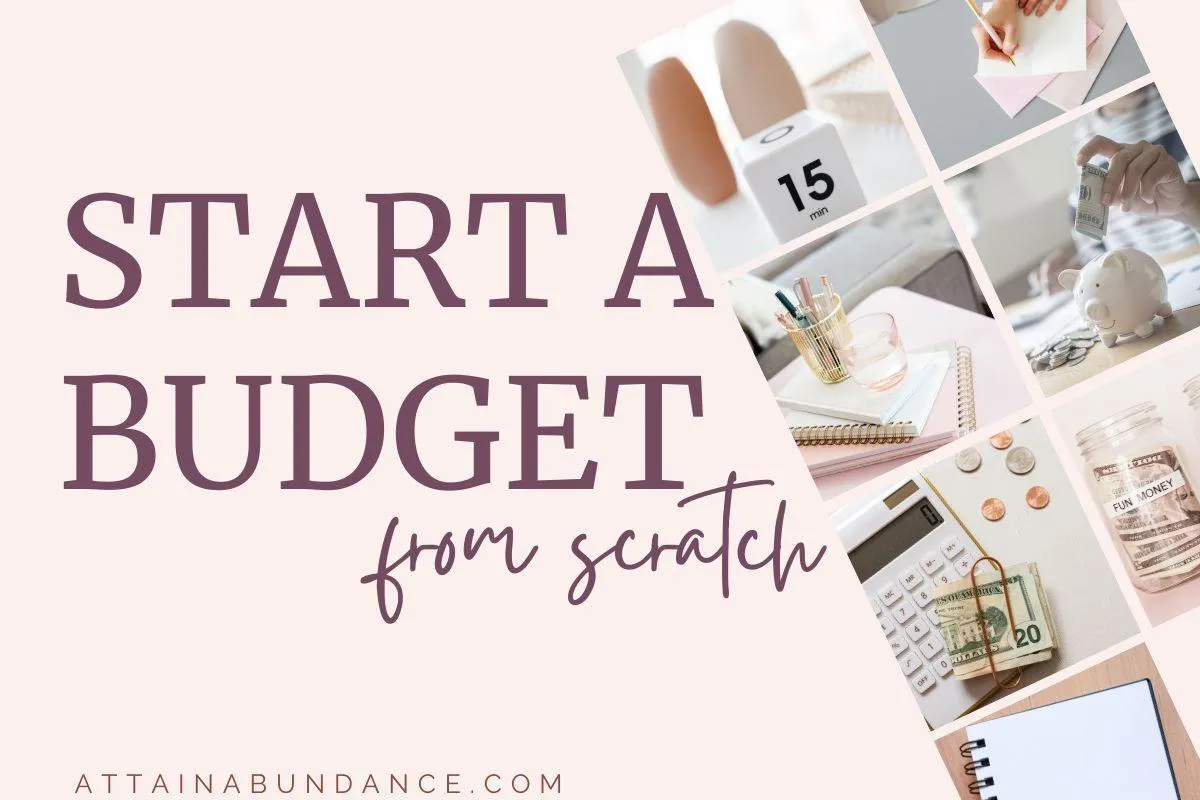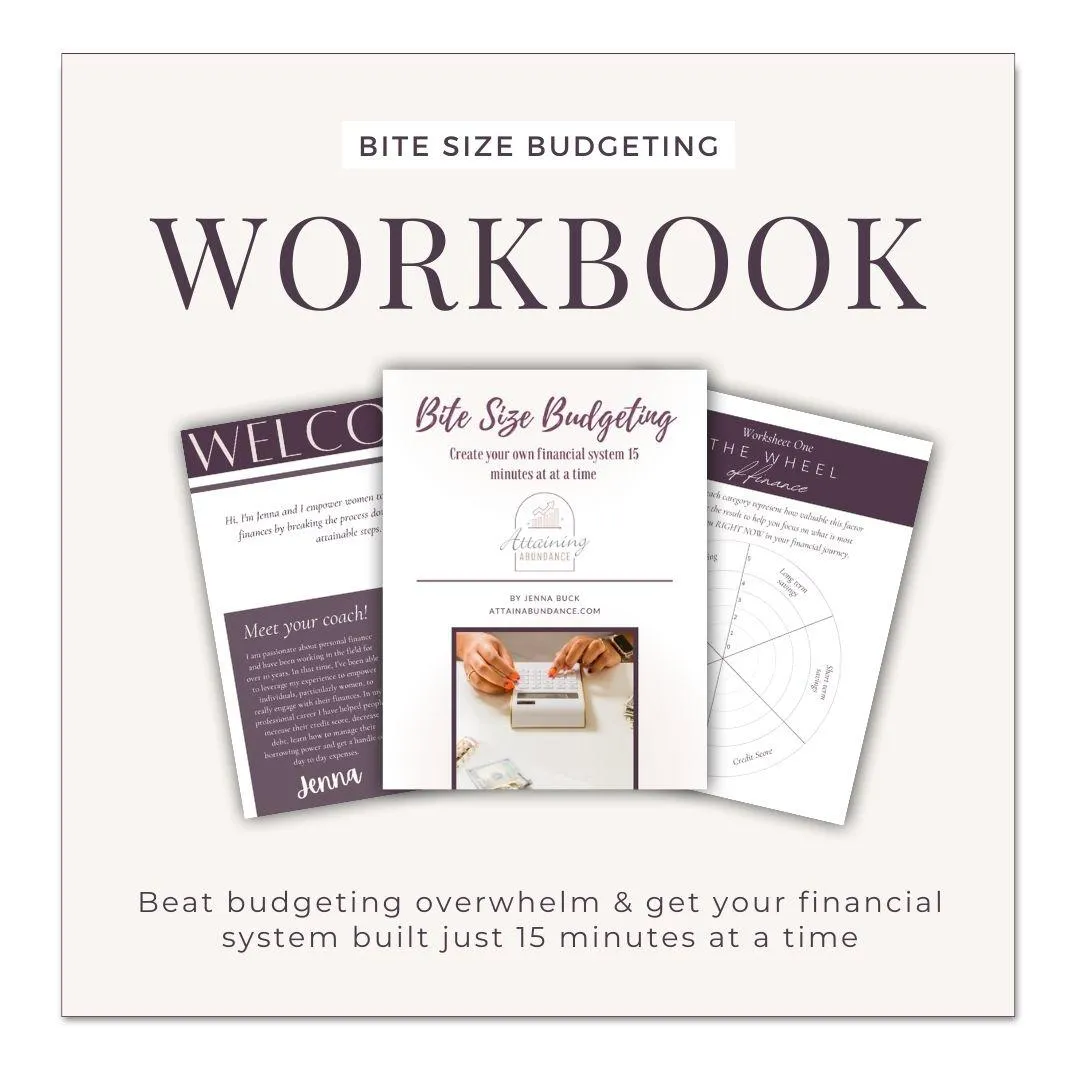BLOG
Attaining Abundance

How to Start Budgeting
Only 32% of American households utilize a budget, so if you’re going through life without one, you’re not alone. I’ve been on and off the budgeting bandwagon throughout my adulthood. Sometimes I’ve got things dialed in beautifully. Sometimes I’m just tracking my spending without any goals, and sometimes I’m flat out living my best life, not a care in the world (or at least for the moment).
And every time I fall off the budgeting bandwagon, the thought of getting back to it is daunting.
Over time, I’ve developed a system to get me back on track when I inevitably go off course and today I’m sharing it with you.
Since anything financial tends to evoke a lot of feelings, we’re going to come at this with a purely data-driven approach.
Step 1: Gather the Data
The first step is to track down your last month of transactions. (If you want to break this down even further, your can work by paycheck.)
Either grab your printed statement or pull your accounts up on your bank’s website or app.
Step 2: Organize the Data
Alright, now we’re going to go through each transaction and categorize them by type. We’re going to have one line item for income, if you have multiple streams of income (heyyy, look at you go!) just add them together.
There are literally a million different ways to set up your spending categories you can use but for the sake of getting the ball rolling we’re keeping it simple. Like…insanely simple.
We’re going to start with four categories. Yes. Just four.
Savings. Debt. Needs. Wants.
Now, if you feel the need to break those categories down further, you absolutely can. But don’t get analysis paralysis. Budgets are meant to be fluid. They can evolve as needed. The important thing right now is to start.
I've included some basic budgeting categories my my free budgeting workbook "Bite Size Budgeting" which you can download here.
Step 3: Analyze the Data
Now it’s time to dig in.
What surprised you about the numbers? Was there anything that you were spending way more money on than you thought? Anything you were spending less on?
Does the way you are spending your money accurately reflect your financial goals? What changes would you like to make?
Do you find that you’re spending more money on wants than needs? Maybe you’re having trouble paying your bills on time but there always seems to be money for the ‘wants’.
Were there any fees that caught you by surprise? Any transactions you don’t recognize?
As I mentioned earlier, this is the part that can tend to induce all the feelings. Rather than let those feelings paralyze you, allow them to propel you forward.
“Ignorance is bliss but knowledge is power.” You may have made some discoveries that leave you uneasy, but now that you know better, you can do better.
Step 4: Make Adjustments
Now that you’ve gathered and analyzed the data, you can decide if there are any changes you’d like to make going forward.
Avoid making big, sweeping declarations. We’re looking for progress, not perfection so don’t over-restrict yourself. Rather than declaring you’re never eating out ever again, I recommend just decreasing the amount you spend by a meal or two each week (or pay period, or month).
If there are stores that cause you to lose every iota of self-control (I’m looking at you, Target) it might be best to do your shopping online for a bit. After last Christmas, I did not step foot into a Target store for 6 months because something happens to me in that store. I can’t explain it. Even now I grab a basket rather than a cart when I go. (Except, ahem, when I found a really great deal on a bookshelf that I needed.)
I’d also advise that you leave yourself a little room to treat yo’ self. Within reason.
The next step is to assign that income to your categories. Every dollar gets a job. If you stuck to the two categories, this is going to be pretty straightforward.
Step 5: Make it a Habit
Now that you’ve got the foundation set, you can continue to build on it. Check and track your transactions every couple days. Set an alarm on your phone. If you regularly set aside just a few minutes to update your budget, you'll avoid the overwhelm of having to track down & input 50 different transactions at a time.
If you blow a category on a late-night shopping spree (or, actually...when), just say to yourself “Man, that was crazy,” record it, and move on. Many people let the guilt take over and give up on this whole budget thing.
As time goes on you’ll start to notice patterns and be able to shift those patterns and start working towards attaining your financial goals.


Sign up here for my free Budgeting Workbook


© Copyright Attaining Abundance

